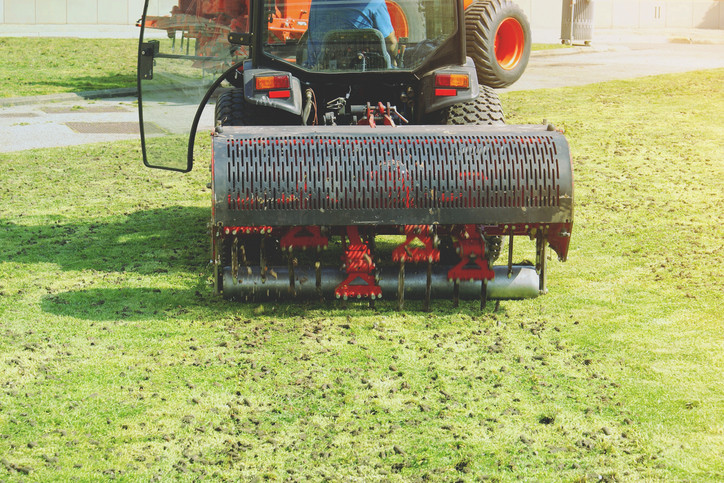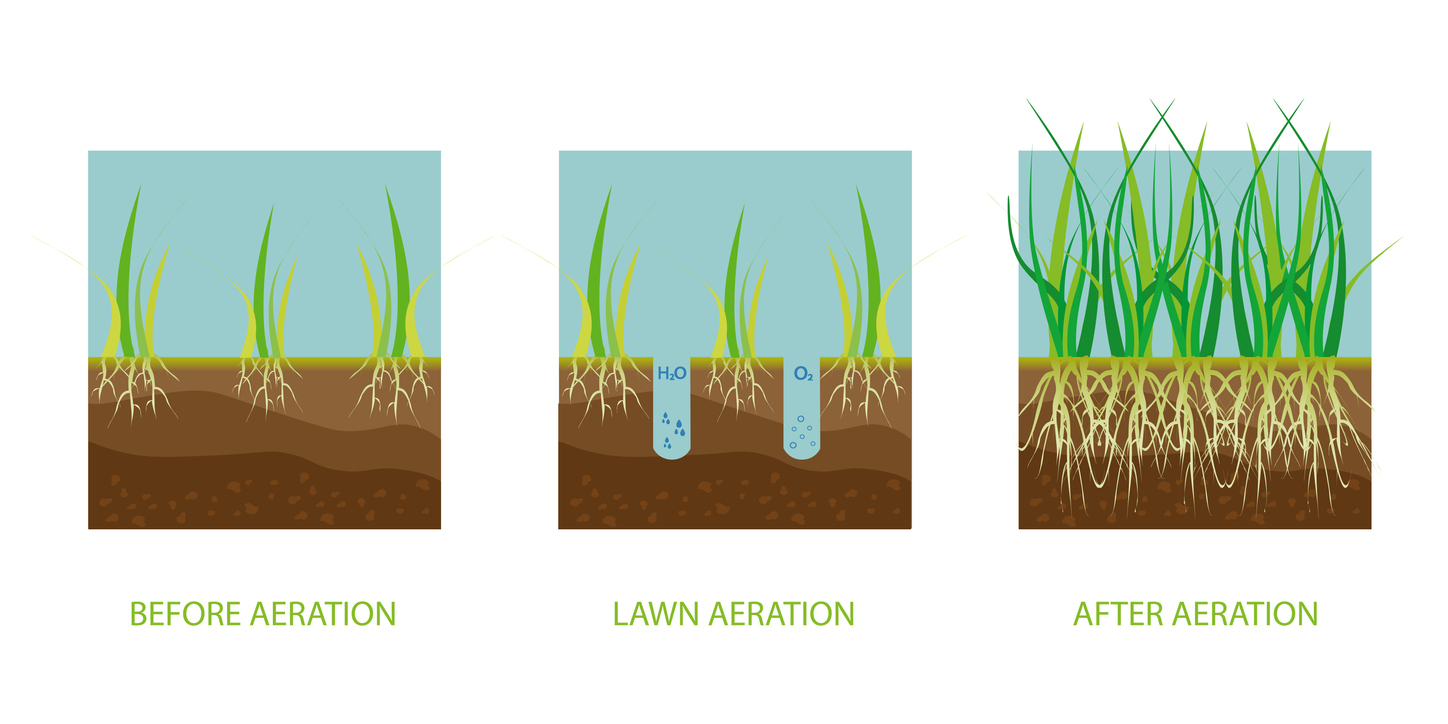Your Cart

Aeration August
Aug 12, 2022
What is Core Aeration and Why you Should do it?

What is Aeration?
Core aeration involves removing small cores of soil and thatch from the lawn’s surface, allowing air, water, and nutrients to reach the root zone more easily (where they’re needed most!). This assists in the health, growth, and vitality of grass plants. The result is a healthier, deeper root system that helps the grass plants better overcome stress caused by insects, disease, and drought.
Cores of soil should be left on the lawn following the service, as they contain microorganisms that assist in breaking down thatch. These plugs will disappear after a short amount of time when left on the surface of the lawn.
In the image below, you can see that before aeration, the grass appears unhealthy and patchy. Once aerated, the soil is able to take in more oxygen and receive water and nutrients, deepening and expanding the lawn’s root zone.

5 Reasons You Should Aerate Your Lawn
Relieves Soil Compaction
Compacted soil can prevent essential elements from reaching the lawn’s roots. Soil can become compacted if the lawn is stepped on frequently, which is a common occurrence in the spring and summer months when more time is spent outdoors.
Thatch Management
Lawn thatch is a build-up of dead grass, stems, shoots, roots, leaves, moss, and other organic material that collects and creates a layer on the surface of your soil. While some thatch is good for your lawn, too much can become problematic. A layer of thatch thicker than half an inch is a cause for concern and will need to be tended to.
Aerating your lawn helps manage the build-up of thatch by introducing thatch-decomposing microorganisms that reach from the soil to the top of the thatch layer.
Builds a Thicker Lawn
Aeration stimulates root development and growth. After the hot summer season, aeration is best paired with overseeding, which will aid in building a thicker lawn. Overseeding alongside aeration enhances seed to soil contact necessary for germination and creates a damp, protected environment optimal for seedling growth and development. If you’re looking for a thicker lawn with tight roots, aeration followed by overseeding is your best bet!
Reduces Runoff
If you find your yard has runoff or puddling problems after a heavy rainfall, aeration could be the fix you need. Creating small holes in the ground will eliminate the puddling problems and will also help the grass roots get their proper consumption of water.
Promotes New Growth
It is recommended homeowners aerate their lawn before fertilizing and seeding. This is because it gives the granules and seeds a better opportunity to take hold and penetrate the soil. Aeration also ensures that the roots of your lawn have more room to move and grow. Once aeration is performed, your lawn can start taking in a larger volume of nutrients again. Once seeding is complete, your lawn will see new, healthy growth!
Brought to you by Weed Man: We Care for Your Lawn
 English (USA)
English (USA) Français (CANADA)
Français (CANADA)